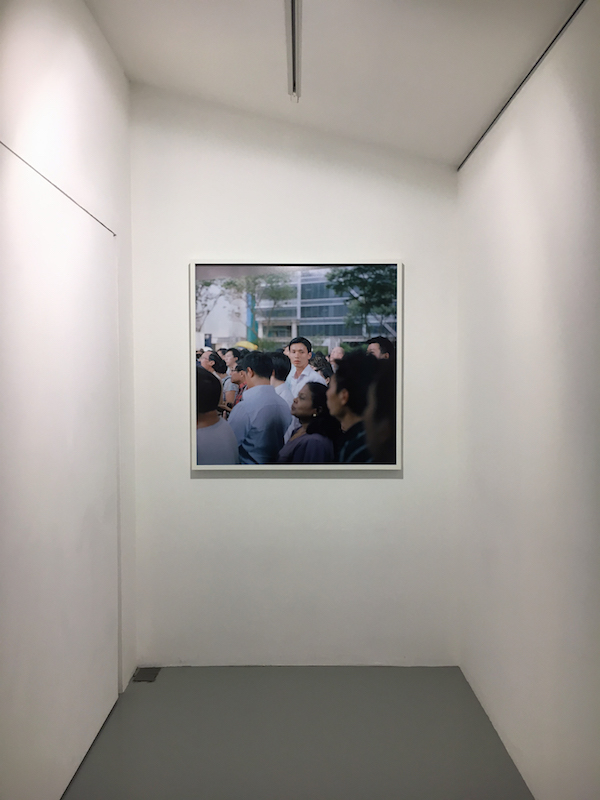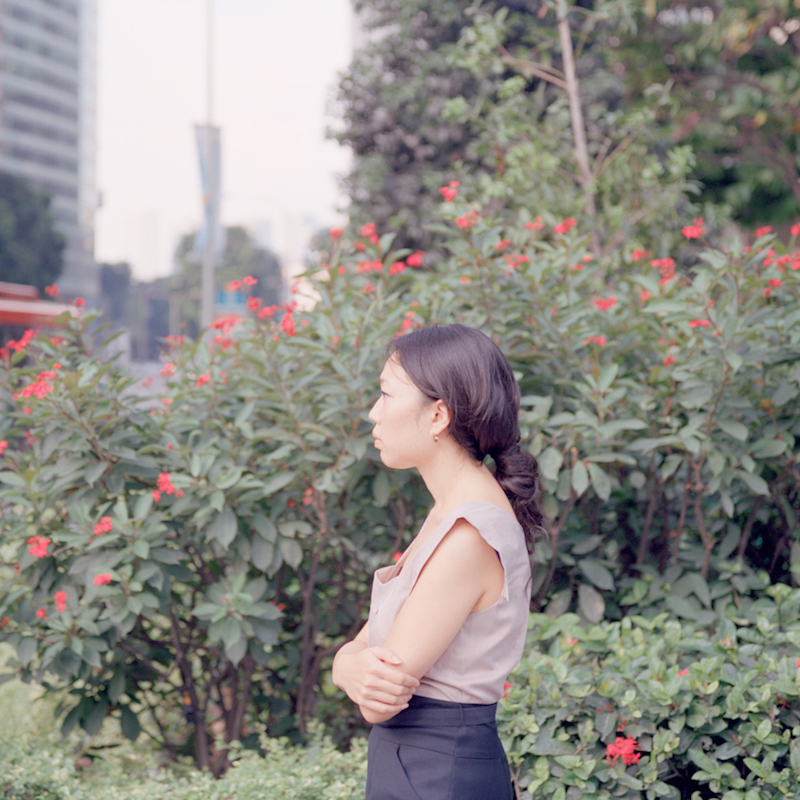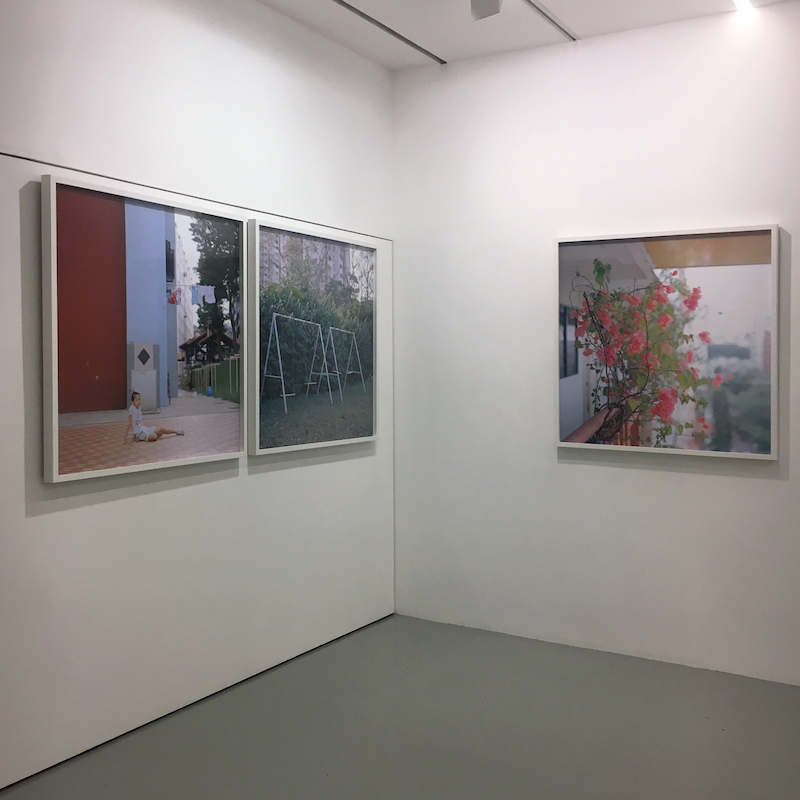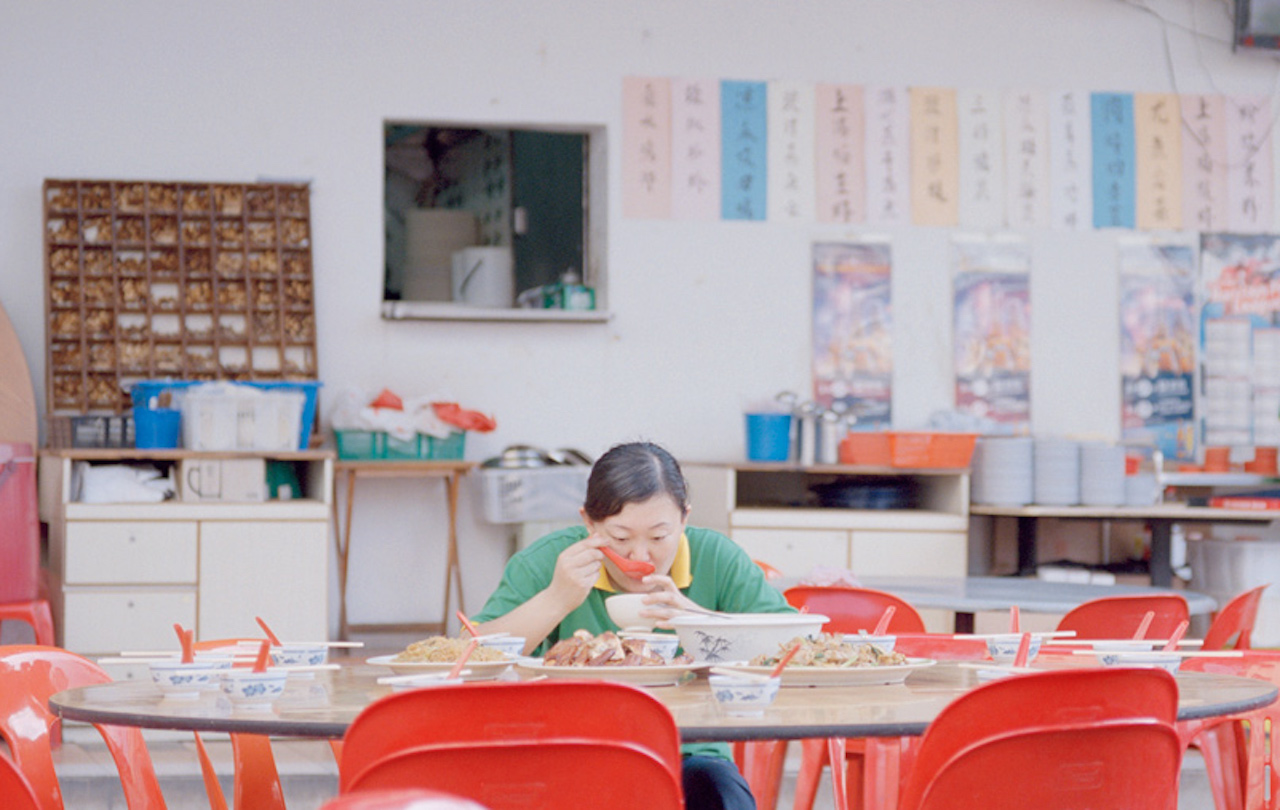Top image: Nguan.tv
Exhibition pictures by Puteri Kumalapuri
Three heads pop out of a quartz-coloured sea; a rainbow painted over a public housing building; a salaryman holds up an umbrella amidst a crowd caught in a downpour.
These are images of Singapore through a compassionate lense—of a Singapore now extinct, having given way to the sterile glitz of glass offices and malls. This is also the first time I’m encountering Nguan’s work in Mineral Mag.
Since then, he has grown to become a cult name in the local art scene. The elusive, unassuming artist prefers to let his pictures speak for themselves, albeit in soft, hushed tones. It is difficult to find anything online about him other than his pictures. In an age where the internet is inescapable, his conspicuous absence makes him even more of an enigma.
Today, I still refuse to take out of its protective cover a cherished copy of his photobook “How Loneliness Goes”—the namesake of the solo exhibition whose opening I attended two days ago.

At the FOST gallery, all his subjects are dressed in out-of-date garb (think dress shirts tucked into straight-cut pants and timeless, airy blouses and dresses), somehow bathing the space in a warm, syrupy glow. In one image, a woman sits on steps looking at her mobile phone, and her device looks positively anachronistic.
Often, his subjects face the camera with their backs. In the instances where they are looking into the lense, they do so almost as if as an afterthought. They are hardly ever smiling, frowning, or displaying any other sort of emotion. Instead, they are caught with dazed and empty expressions on their faces.
They are also often slumped, hunched, or prostrate. Accompanying the weight of their bodies, the city comes to a standstill. When a shopkeeper looks into the camera with her head on her arms and against a counter, you know, there is to be no shopkeeping today.
It is this portrayal of dialogue with the urban space that shines through these photographs.

When facing the artist himself, before anything else, I ask what he thinks of nostalgia, that obvious key component to his works.
He says that photography is an art inseparable from nostalgia. The simple fact is that you can’t take a photo of anything from the future, that anything captured through the lense is a thing of the past. You can’t tear nostalgia away from photography: that in itself is contradictory. This maxim is so plain to see and yet it has never occured to me.
To Singaporeans who grew up in this environment, Nguan’s photographs are bound to strike a nostalgic chord. But to the non-Singaporean followers of The New Yorker’s photography account, which he took over for a few weeks or so, his photograph of Rochor Centre is just a photograph of a pretty multicoloured landmark. There are no stories to accompany it, no “My father used to go to the market there,” no “It’s going to be demolished in a few months.”
Just a flamboyant edifice as presented through Nguan’s impassive lense.
In an interview with Citylab, Nguan says, “I’m doing more for the country’s image overseas than our tourist promotion board. I’m a better liar than they are.”

With his architectural depictions revolving around grubby 50s and 60s constructions, these brutalist structures become a canvas on which Nguan paints softer and more romantic tones.
In doing so, he makes a city that’s tough to love more loveable.
The iconic pastel hues so characteristic to his works imbue the photographs with a dream-like quality. Even the boldest colours whisper, not shout. We find our city anaesthetised, reposed, plugged out of its usual frantic bustle. This languid quality, Nguan admits, is part of his conscious artistic intent.
It is also a response to a habitat that alienates so many by ruthlessly changing itself. By ascribing lethargy to a city-state that so loves to describe itself as a mutable, dynamic entity, Nguan is able to halt the throes of change, bringing us back to a time when people felt more comfortable within their surroundings; when people fit in more snugly into their landscape.

Nguan may want to present this pretty image to foreigners who marvel and gush at his brutalist wonderland. Yet they are just as—if not even more—impactful to the people who inhabit the island.
He is aware that these images are artificial, that the pictures he constructs of the island are detached from reality. His architectural subjects mostly end up either redeveloped or neglected in pursuit of glossier buildings. The compendium of images he stitches together are made of the invisible bits and pieces of Singapore that still remind us of a past its residents used to share.
A broken plant pot, a flight of stucco-tiled steps, and a kopi-drinking “uncle” on a red plastic chair peering out into space. He manages to pick these tiny details out, to preserve them carefully and lovingly, to keep them far away from the draconian construction-crane ethos we live by.
“Sometimes I see you with your head in the clouds and your heart on the floor,” Nguan says in an ode to the island. “Though I’ve known you all my life, as I fumble my way home I frequently become hopelessly, irretrievably lost. In my photographs I try to find you. Please—for once—hold still.”

Faced with Nguan’s documentation of the most unassuming relics of a by-gone Singapore, we are confounded, afraid to confront a home we have changed so much we no longer feel at home in it.
Whether scrolling through his Instagram feed or viewing his pictures on the walls of the FOST gallery, I find myself bewildered, asking where this Singapore has gone. I find myself asking why we find ourselves outside of our own parents’ narrative. Whether this is fair. Whether anyone is to blame.
Insistently, Nguan clings to whatever remains of that squandered age to craft a sort of hyper- nostalgia and forces us to contemplate it. He makes us question the essence of our island: has it become a corporate frankenstein where to alter is to improve? He makes us think of our role in it, our place in it, the estrangement we feel from it even as we call ourselves its residents.
He makes us think of loneliness.
—
How Loneliness Goes runs at FOST Gallery until 12 April, 2017






